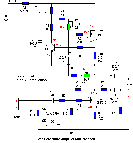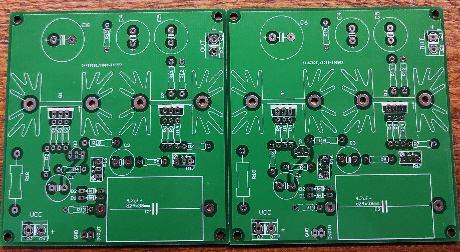Setting R16 (bias trimmer): I chose a bias current of about 210mA; with higher impedance headphones a lighter bias will be fine. Anyway, I'd set the bias current between 100 and 300mA, not less, even with higher impedance headphones. More is not useful.
To measure the bias current, connect a DC voltmeter, without any input signal, across R10 or R12 (preferably R12 because its cold side is connected to ground). The resistance value is 2.2 Ohms, so the bias current is about V(R12)/2.2 [Amperes]. For example, with 0.6VDC across R12, we obtain 0.6/2.2=0.27A, or 270mA.
Setting R17 (balance trimmer): You must use a signal generator and an AC voltmeter and/or an oscilloscope. To trim the Id(Q1)/Id(Q2) ratio, apply a test signal at the input – for example 1KHz - and measure the AC contribution across R10 and R12. Adjust R17 so that the contribution across each resistor is equal.
the Zen topology is perfect excellent sound quality, simplicity, linearity and no multi-stage feedback. It is a single stage class A MOSFET design with the right gain and a low output impedance. Here we don't have the limitations of the Zen amps at least in the single-stage implementations regarding speaker compatibility












